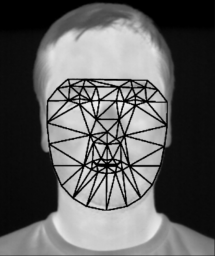
SmartCare Unit – Facial Expression Monitoring
Motivation
Pain is not only an unpleasant experience, it also puts the human body under stress. Postoperative pain often occurs after surgical interventions and has an impact on the patients’ well-being as well as on the duration and quality of the recovery phase. For this reason, one of the responsibilities of hospital staff is to ensure that patients are as pain-free as possible. While awake and responsive patients are able to alert staff to their pain, sleeping or anesthetized individuals are unable to do so. Nonetheless, anesthetized patients may also suffer from pain. For this reason, unresponsive patients in intensive care units and recovery rooms are monitored by staff and given pain medication as needed. Currently, however, there is no method or measurement device that can reliably detect pain by measuring physical variables. For this reason, staff primarily pay attention to patients’ facial expressions during their rounds, which are also an indication of the perceived pain in sedated persons.
Goals
The project Mimic Monitoring aims at reproducing this assessment of the pain level practiced by the staff on the basis of the patients’ facial expressions with a technical setup. The patients’ faces are to be recorded with an infrared thermography camera (IRT) and the pain level is to be continuously determined with the help of these images. For this purpose, extensive research work in the field of digital image processing is necessary on the part of the LfB. The first step is to develop a reliable method for detecting and tracking faces in IRT videos. The particular challenge here is that thermographic images sometimes show significantly different features in faces than videos taken with conventional cameras. Furthermore, the contrast in IRT data is low, which further reduces the achievable accuracy of tracking. In addition, methods for reliable and accurate detection of important facial features such as the eyes or nose, which can provide a wealth of potential information about the subjects’ pain levels, are lacking to date. Nevertheless, the method to be developed must achieve high accuracy and robustness in detection and tracking in order to provide the most accurate location information about different facial areas. In a further step, a classification method for the estimation of the perceived pain based on the images has to be explored. For this purpose, machine learning algorithms are trained using reference data, which are then to autonomously assign a pain index to the faces in real time. The problem here is the large variance in the IRT recordings, which makes it difficult to develop a robust classifier. In a final step, all subcomponents will be assembled to result in a system that will allow medical personnel to use it in a real intensive care scenario.
Mimic monitoring is a project of the SmartCareUnit-Network. The core idea of this association of industrial, academic and medical partners is to develop innovative and sustainable concepts in intensive care medicine. It is a publicly funded project that aims to secure the competitiveness of the German research and industrial location by involving research institutions as well as small and medium-sized enterprises.
Theses
New theses are regularly advertised in the area of Facial Expression Monitoring. In addition to the general overview, there are also numerous topics that have not yet been advertised, which will be gladly presented in a personal conversation.
Partners
- Prof. Dr. Steffen Leonhardt, Medical Information Technology (MedIT), Helmholtz Institute for Biomedical Engineering, RWTH Aachen University
- Prof. Dr. Vladimir Blazek, Medical Information Technology (MedIT), Helmholtz Institute for Biomedical Engineering, RWTH Aachen University
- Prof. Dr. Rolf Rossaint, Department for Anesthesiology, University Hospital RWTH Aachen
- Prof. Dr. Michael Czaplik, Department for Anesthesiology, University Hospital RWTH Aachen
- Prof. Dr. Bettina Wiese, Chair of Psychology, Personnel and Organizational Psychology, RWTH Aachen University
- Dr. Christian Burk, Institute of Psychology, Personnel and Organizational Psychology, RWTH Aachen University
- Network partners: www.smart-care-unit.de/partner.html
External Funding
- BMWi/ZIM, “SmartCareUnit– Facial expression analysis using geometric and dynamic IRT features and development of tracking algorithms.”, Project nr. 16KN035923
- OPSF645 – Cooling Upper Lip = Agony? (CUL=A) – Detecting Differential Responses to Psychosocial Stress through Thermal Infrared Tomography, RWTH Aachen
Contact
Dorit Merhof
+49 241 80 27860
Dorit.Merhof@lfb.rwth-aachen.de




